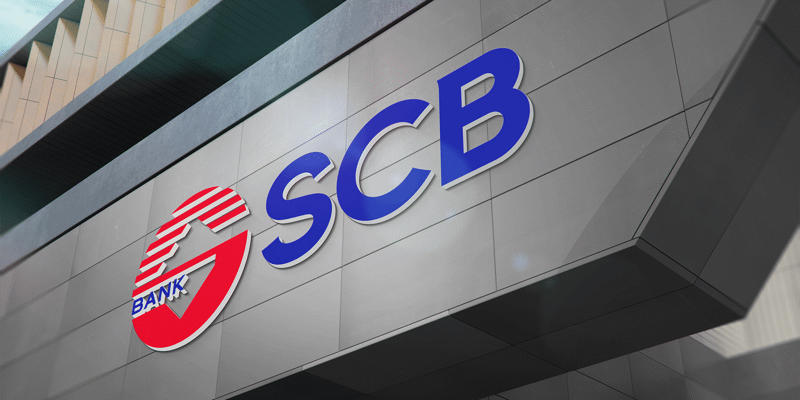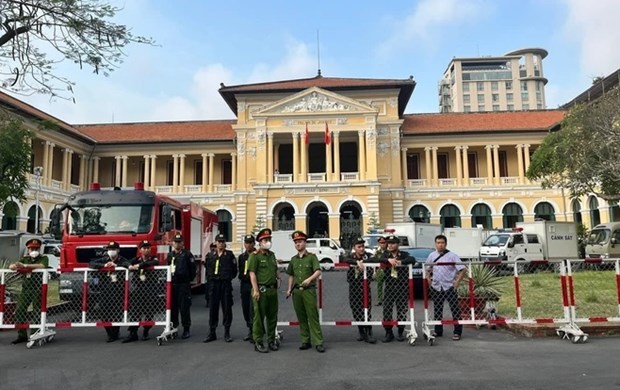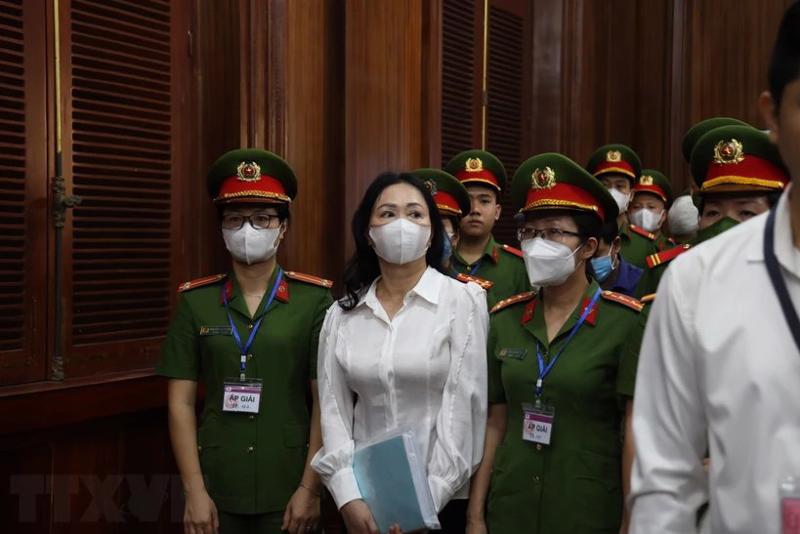From early in the morning on March 5, the area in front of the Ho Chi Minh City People’s Court has been blocked off by security forces. Other entrances into the courthouse were also secured by police officers.
At around 7am, 81 defendants were brought to the courthouse in specialized vehicles. The individuals, including main defendant Truong My Lan, 68, were immediately led to a holding room next to the main courtroom.
Presided over by Judge Pham Luong Toan, the trial is expected to last until April 29. Over 200 lawyers will take part, five of whom are defending Lan. The court has also summoned more than 2,400 other people in relation to the case.
As per the request of the lawyers involved, the jury also summoned representatives from the State Bank of Vietnam (SBV) and the appraisal company Hoang Quan. In order to speed up the trial, court sessions may be held on Saturdays and Sundays.
Truong My Lan, Chairwoman of the Van Thinh Phat Group, stands accused of embezzlement, paying bribes, and violating regulations on banking and related activities in relation to the loss of VND304 trillion ($12.3 billion) in funds belonging to the Sai Gon Joint Stock Commercial Bank (SCB).
Chu Nap Kee Eric, 68, a Hong Kong (China) businessman and Lan’s husband, is accused of aiding his wife in siphoning money from SCB, directly causing damage of more than VND9.1 16 trillion ($369 million) out of the VND304 trillion total. Truong Hue Van, 36, Lan’s niece and General Director of the Van Thinh Phat Group, is accused of being directly involved in Lan’s activities and is responsible for damages of nearly VND1.1 trillion ($44.5 million).
Of the 82 other defendants involved in the case, 45 are former leaders and employees at SCB, 15 are former officials of the SBV, three are former government inspectors, and one is a former official at the State Audit Office.
These defendants are charged with embezzling property, accepting bribes, abusing their positions and power while performing their duties, showing a lack of responsibility causing serious consequences, violating regulations in the operations of credit institutions and banking activities, and abusing trust for property appropriation. Five former leaders at SCB charged in the case are still on the run.
Network of “shell” companies
The indictment of the Supreme People’s Procuracy states that the Van Thinh Phat Group, under Lan’s leadership, established a network of more than 1,000 domestic and foreign “shell” companies. These companies conducted no business activities and formed an ecosystem under the Van Thinh Phat Group’s umbrella. Managed by Lan’s relatives, they were used to facilitate the arrangement of fictitious loans and share transfers.

Since 2011, Lan acquired three private banks and merged them to become SCB. She then manipulated the bank’s activities to mobilize funds for her personal businesses. Specifically, she and her accomplices used SCB as a financial company to provide capital for the Van Thinh Phat Group’s ecosystem.
Despite not holding any official position at SCB, Lan was its major shareholder, controlling between 85 and 91.5 per cent of shares through her confidants. These people, who are experienced bankers, were put into leadership positions in SCB by Lan and earned monthly salaries of between VND200 million and VND500 million $8,000 and $20,000). They also received “gifts” from Lan on special occasions, to ensure their loyalty.
To withdraw money from SCB, Lan directed the key subordinate group at the Van Thinh Phat Group to utilize these “shell” companies, either by hiring or enlisting individuals to hold assets and shares in their names, and to sign documents to formalize fraudulent loan applications.
Furthermore, she also directed individuals entrusted with managing companies engaged in actual business activities, including her niece and her husband, to sign documents for fraudulent loan schemes.
Billions of dollars in damages
Lan is also accused of ordering her subordinates to collude with appraisal companies to inflate the value of assets used to guarantee loans by dozens of times. She also introduced assets with insufficient legal backing and unregistered for collateral transactions, making it easier to withdraw high-value assets and replace them with lower-value alternatives.
Most of Lan’s and the Van Thinh Phat Group’s loans were disbursed prior to formal documentation, with many lacking approval from authorized levels within SCB.
Investigators have determined that between 2012 and 2022, SCB disbursed capital on more than 2,500 loans from Lan with a total value of more than VND1,066 trillion ($43 billion). These transactions accounted for 93 per cent of SCB’s total loans.

From October 9, 2018 to October 7, 2022, Lan directed the creation of 916 fake loan records, appropriating more than VND304 trillion ($12.3 billion) from SCB. The bank remains unable to recover the sum and the outstanding amount has accrued over VND129.3 trillion ($5.2 billion) in interest. In all, Lan is accused of causing losses of VND498 trillion ($20.1 billion) to the bank.
To conceal her activities at SCB and facilitate the bank’s restructuring, Lan is accused of giving bribes to SBV inspectors. Do Thi Nhan, former Director of Department II of the Banking Supervisory Agency, received $5.2 million.









 Google translate
Google translate